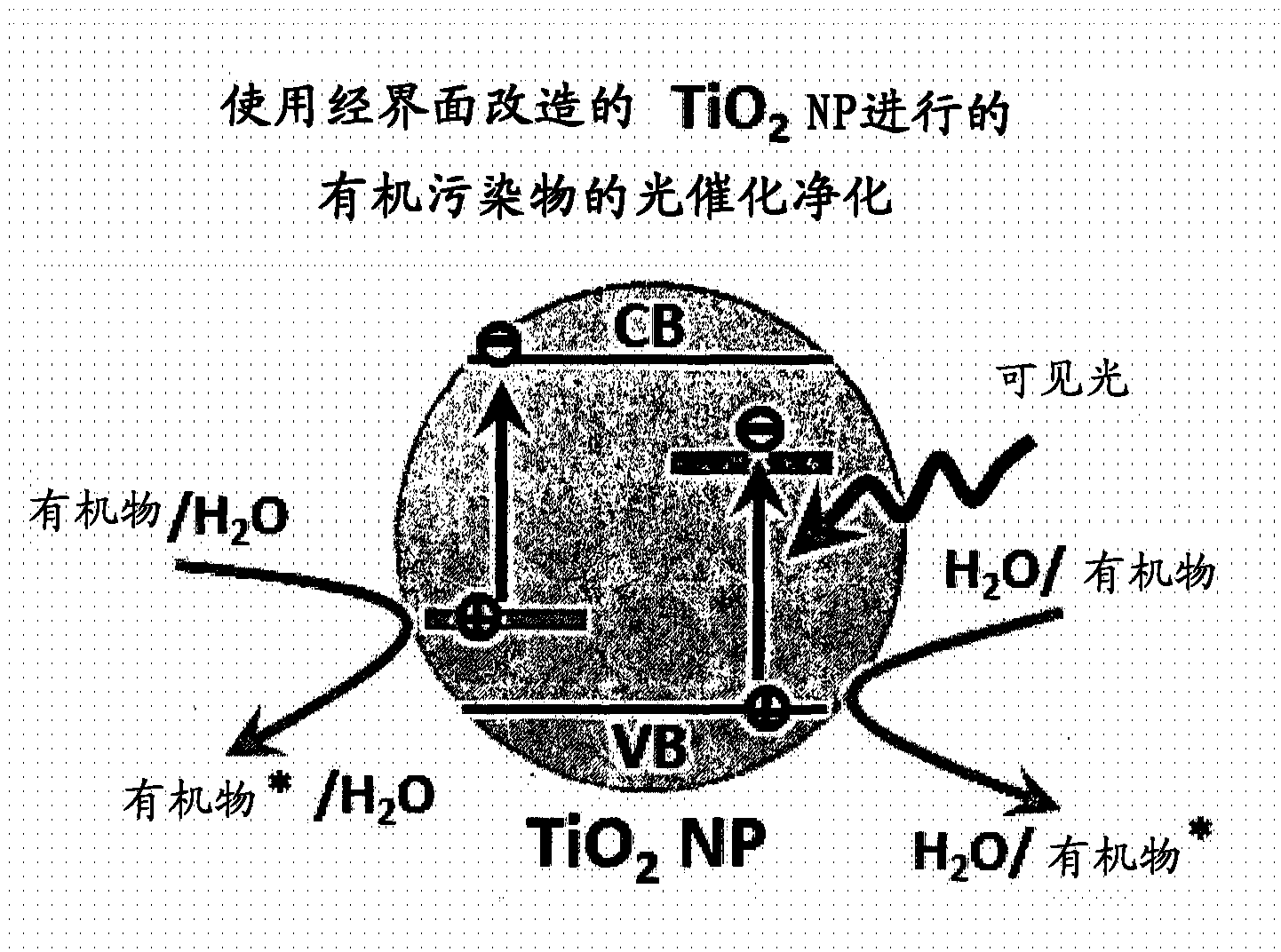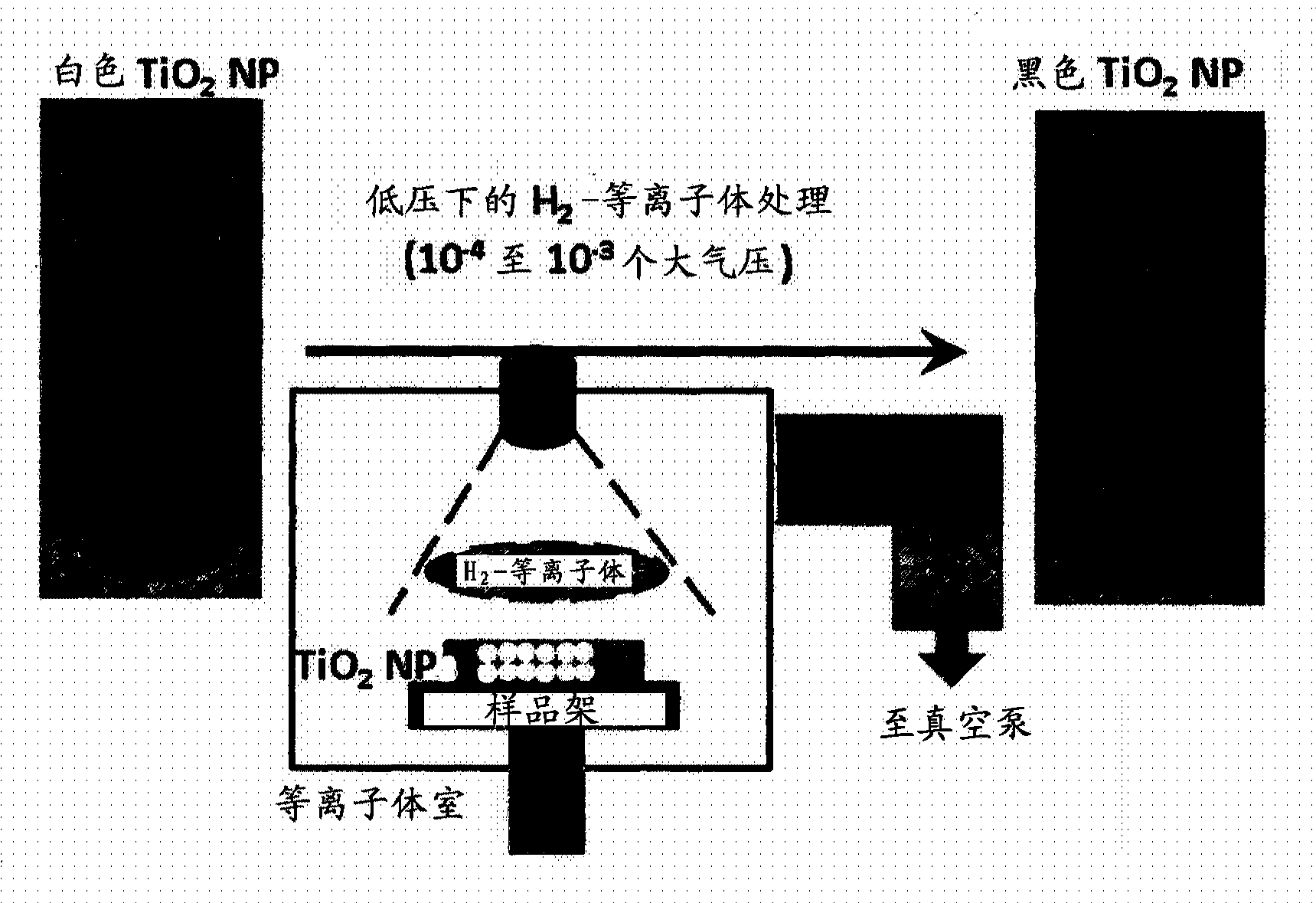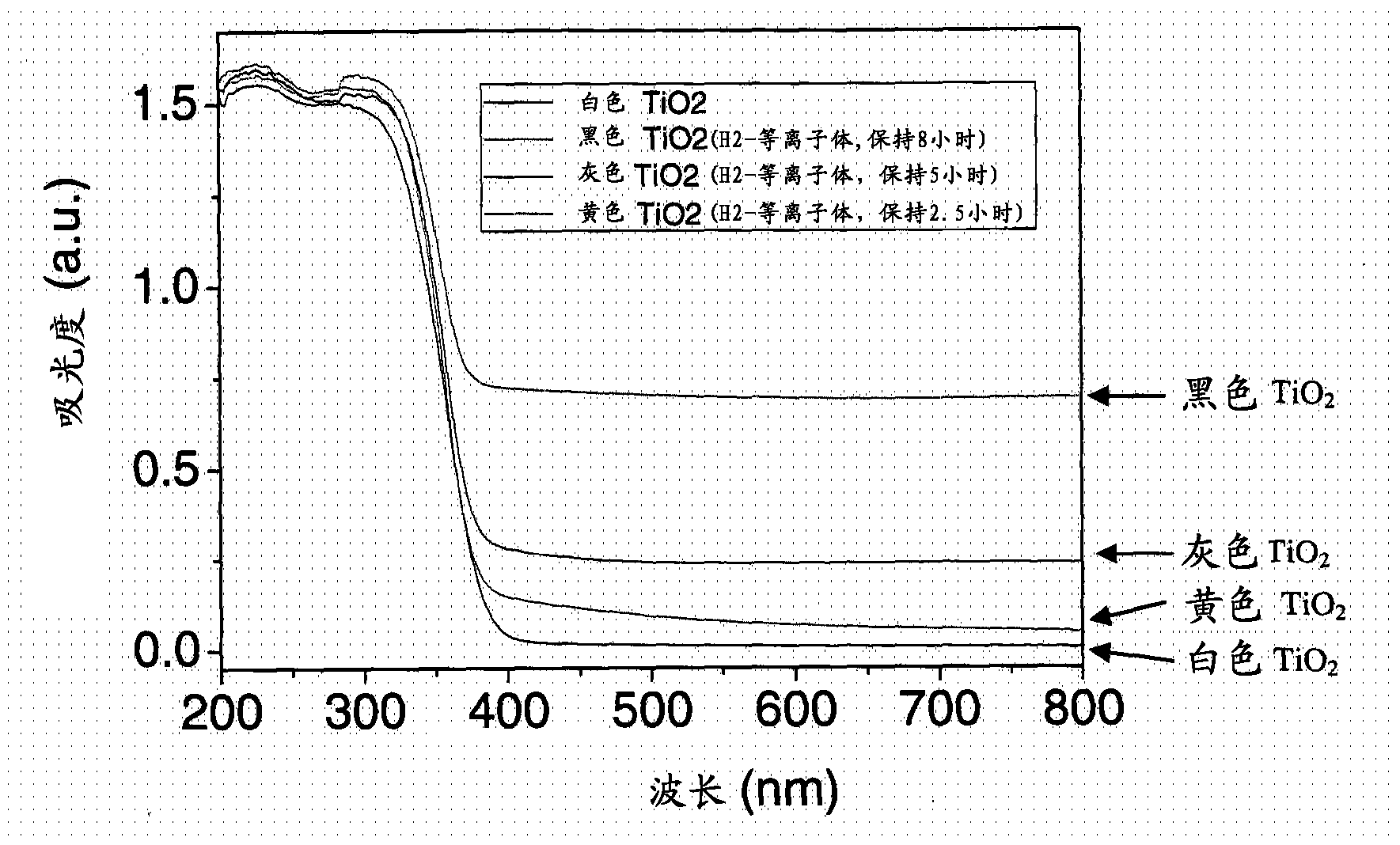Photocatalytic metal oxide nanomaterials, preparing method utilizing H2-plasma, and use for purification of organic waste in water
A nanomaterial, plasma technology, applied in TiO2 nanomaterials, the starting material of nanomaterials is white TiO, which can solve the problems of changing the stoichiometry of nanomaterials, not seeing enough improvement in visible light and IR light absorption, etc.
- Summary
- Abstract
- Description
- Claims
- Application Information
AI Technical Summary
Problems solved by technology
Method used
Image
Examples
Embodiment 1
[0071] Example 1: Black TiO 2 Nanoparticle Production
[0072] 500 mg of commercially available white anatase TiO 2 Particles (MTI Corporation, average particle size about 8 nm to 10 nm) were placed in a plasma enhanced chemical vapor deposition (PECVD) chamber. At a temperature of 720°C, 10 -4 atmospheres to 10 -3 Hydrogen gas was introduced with a flow rate of 60 sccm under a low pressure of 1 atmosphere and an RF plasma of 110 W. A black powder was collected after 8 hours.
Embodiment 2
[0073] Example 2: Black TiO 2 Characteristics and Structure of Nanoparticles
[0074] through as Figure 4 XRD as shown and as Figure 5 The Raman spectrum shown to evaluate the black TiO 2 Crystal structure of nanoparticles. X-ray diffraction (XRD) was performed on a Bruker AXS D8 system using Cu Ka radiation. Use Ar + (514.5nm) laser excitation source was used for micro-Raman scattering analysis at room temperature by Renishaw spectrometer. X-ray photoelectron spectroscopy (XPS) was carried out in a domestic ultra-high vacuum system with an Omicron double-anode X-ray gun. like Figure 4 and Figure 5 Shown, H 2 - Plasma treatment does not affect TiO 2 The crystal structure of the nanoparticles, and they are still in their original anatase phase. Measured from XPS ( Figure 6A and 6B ), we do not observe TiO 2 Any reduced chemical state of Ti, such as Ti 3+ . This shows that H 2 -Plasma treatment mainly on TiO 2 The formation of defects associated with bandg...
Embodiment 3
[0075] Embodiment 3: Photocatalytic decomposition of methylene blue
[0076] Abet technologies sun2000 solar simulator (100mW / cm 2 ) for photocatalytic degradation of methylene blue under visible light irradiation by filtering out incident light with a wavelength shorter than 425 nm. In a typical experiment, 10 mg of white TiO 2 or black TiO 2 Add to an aqueous solution (30 mL) containing 5 mg / L methylene blue. The mixed solution was placed in a 50 ml flask and stirred with a magnetic stirrer. A circulating water jacket was used to maintain the temperature of the beaker at approximately 25°C during irradiation. After a given irradiation time, an ultraviolet-visible absorption spectrum (Shimadzu UV3600) was measured to estimate the residual concentration of methylene blue in the solution by integration of absorption peaks.
[0077] Figure 7 shown in the absence of any TiO 2 compared to the case of nanoparticles using 0.2 mg of black TiO 2 and white TiO 2 Digital pictu...
PUM
 Login to View More
Login to View More Abstract
Description
Claims
Application Information
 Login to View More
Login to View More - R&D
- Intellectual Property
- Life Sciences
- Materials
- Tech Scout
- Unparalleled Data Quality
- Higher Quality Content
- 60% Fewer Hallucinations
Browse by: Latest US Patents, China's latest patents, Technical Efficacy Thesaurus, Application Domain, Technology Topic, Popular Technical Reports.
© 2025 PatSnap. All rights reserved.Legal|Privacy policy|Modern Slavery Act Transparency Statement|Sitemap|About US| Contact US: help@patsnap.com



